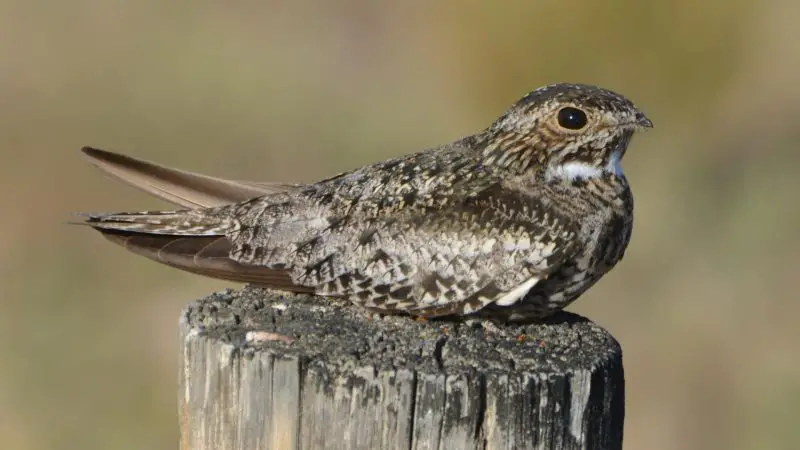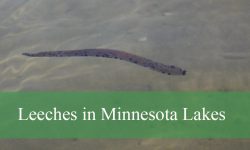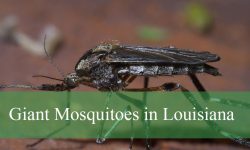Nighthawks are among the most mysterious birds gliding across Nevada’s twilight skies. Many residents hear their sharp calls or catch a glimpse of their long wings slicing through the evening air without realizing they are watching one of the most fascinating desert aerial hunters.
Despite their name, nighthawks are not hawks at all. They belong to a unique bird group adapted to dusk and dawn activity. Nevada’s deserts, sagebrush plateaus, and scattered city lights create the perfect environment for them to thrive. Their presence is more common than people realize, yet much of their life remains unseen.
This article uncovers the hidden facts behind nighthawks in Nevada. From their unusual hunting behaviors to their impressive migrations and surprising nesting habits, their world is filled with details that even longtime birdwatchers may not know.
Understanding Nighthawks in Nevada

What Nighthawks Really Are
Nighthawks belong to the genus Chordeiles, with the most widespread species in Nevada being the common nighthawk. They are part of the nightjar family, a group known for cryptic coloration, large eyes, and unique calls.
Their long pointed wings and streamlined bodies resemble small falcons which often fools casual observers. But their diet and biology are entirely different from daytime raptors. Nighthawks feed almost exclusively on flying insects which they capture midair with wide gaping mouths.
Their flight is buoyant and erratic, creating sweeping arcs across the sky at dusk.
Distinct Appearance
Nighthawks possess mottled brown, gray, and white plumage that blends perfectly into desert rock and gravel. Their wing patches form bright white bars visible during flight. These help individuals communicate visually in low light.
When perched, they sit lengthwise on branches or rocks making them nearly invisible. Their camouflage is so effective that hikers often pass within inches without noticing.
Where They Live in Nevada
Nevada’s landscapes provide ideal nighthawk habitat. They occupy sagebrush flats, open deserts, dry riverbeds, grasslands, and even urban areas where streetlights attract insects.
During summer evenings, nighthawks appear above Las Vegas, Reno, and smaller towns. They circle near streetlights hunting moths, beetles, and nighttime insects drawn to artificial lights.
Why Nighthawks Thrive in Nevada
Low Competition at Dusk
Nevada’s desert environment contains few bird species active at twilight. This gives nighthawks access to abundant insects with minimal competition. Their large eyes and exceptional night vision let them navigate fading light.
Because many predators retreat during dusk, nighthawks enjoy a safer hunting window.
Insect Rich Environments
Warm desert nights support massive insect blooms. Moths, beetles, midges, and flying ants form swarms that nighthawks efficiently consume. Their hunting strategy depends on these nightly emergences.
Areas with lakes, reservoirs, and irrigated agricultural fields attract even more insects, boosting nighthawk activity.
Adaptation to Open Landscapes
Nevada’s open skies provide the perfect aerial hunting space. Nighthawks perform acrobatic maneuvers, twisting, diving, and circling to capture prey mid flight.
Their wingspan allows long glides that conserve energy in wide desert regions.
Hidden Behaviors You Never Knew About
Aerial Feeding
Nighthawks catch insects by flying with their mouths wide open. Their bristle lined jaws help funnel prey inward. They sometimes swarm in loose groups as insects rise from the ground at sunset.
Their hunting style appears chaotic but is highly precise. They pivot midair while tracking small moving targets.
The Boom Dive Display
Male nighthawks perform an astonishing aerial behavior during breeding season. They dive steeply toward the ground then spread their wings suddenly. The rushing air vibrates their wing feathers creating a deep booming sound.
This sound startles many observers who mistake it for a mechanical noise. The booming display signals territory ownership and impresses potential mates.
Daytime Resting Habits
During the day nighthawks rest motionless on gravel, desert soil, or fence rails. Their camouflaged plumage blends seamlessly with surrounding textures. This makes them nearly impossible to detect.
Their low profile resting posture helps reduce detection by predators.
Nighthawk Anatomy and Adaptations
Large Eyes for Low Light
Nighthawks possess oversized eyes relative to their head size. These eyes gather more light at dawn and dusk, providing exceptional vision in dim conditions.
Their retinas contain specialized cells that enhance night sensitivity.
Wide Mouth and Bristle Fringe
Unlike other birds, nighthawks have extremely wide mouths shaped like small scoops. Feathery bristles along the edges create a barrier that channels insects inward during flight.
This adaptation allows them to capture prey without slowing down.
Long Wings
Their wings are long and pointed similar to swallows or falcons. This design enables swift maneuverability, rapid turns, and extended gliding.
Long wings also support long migration flights.
Feeding Habits in Nevada’s Desert Skies
Targeting Insect Swarms
Nighthawks follow insect emergence patterns. Warm evenings, rising humidity, and lights attract their prey. They circle repeatedly through swarms until their stomachs are full.
Different insects appear at different times of night which influences nighthawk activity levels.
Opportunistic Feeding Behavior
Although primarily aerial hunters, nighthawks occasionally glean insects from the ground. They may also take advantage of insect hatches over Nevada’s reservoirs and lake edges.
Energy Needs
Nighthawks consume large numbers of insects each night. Their high metabolic rate requires constant feeding while they are active.
This makes Nevada’s abundant nighttime insects a critical resource.
Reproduction and Nesting Secrets
Ground Nesting Birds
Unlike many species, nighthawks do not build nests. They place their eggs directly on bare ground, sand, gravel, flat rooftops, or desert soil. Their eggs are speckled to match the substrate.
The simplicity of their nesting strategy makes camouflage crucial for protection.
Rooftop Nesting in Nevada Cities
In urban areas, nighthawks often nest on flat gravel roofs. These rooftops mimic natural desert ground. Heat retention helps incubate the eggs but can also pose risks during extremely hot summers.
Chicks depend on shade provided by the parents during daytime.
Chick Development
Nighthawk chicks hatch covered in down and remain motionless to avoid predators. They grow rapidly due to insect rich diets. Within weeks they develop feathers and can short hop or flutter away from danger.
Parents continue feeding until the chicks become fully independent.
Nighthawk Migration Through Nevada
Long Distance Migrants
Nighthawks migrate thousands of miles between North America and Central or South America. They travel at night navigating by stars, geomagnetic cues, and instinct.
Nevada serves as a major breeding ground and stopover region for migrants traveling across the Great Basin.
Stopover Behavior
During migration, nighthawks rest on desert flats, cliffs, or urban rooftops. They feed heavily before continuing their journey. Their ability to fly long distances makes uninterrupted feeding resting periods essential.
Seasonal Timing
Nighthawks arrive in Nevada in late spring. They remain through the summer and early fall before departing south. Their migration timing reflects insect availability and changing day length.
Nighthawks and Nevada’s Nightlife
Sharing the Skies with Bats
Nighthawks often feed alongside bats. They are active during overlapping hours but occupy slightly different foraging zones. Nighthawks hunt higher in the sky while bats forage closer to the ground or vegetation.
This reduces competition and reflects natural resource partitioning.
Activity Around City Lights
Urban lighting attracts insects which in turn attracts nighthawks. Residents may observe them looping and diving under streetlights or parking lot lamps.
This behavior helps them take advantage of human generated insect hotspots.
Desert Silence and Sound
The combination of quiet desert evenings and nighthawks’ distinctive calls creates an iconic seasonal soundtrack. Their peent call echoes across open landscapes.
Surprising Facts Few People Know
Nighthawks Are Not Nocturnal
Although active at night, they are not fully nocturnal. They are crepuscular meaning they are most active at dawn and dusk.
They Can Eat Hundreds of Insects Per Hour
Their rapid feeding helps control insect populations especially during summer mosquito or moth outbreaks.
Their Camouflage Is Among the Best in Birds
Nighthawks rely entirely on cryptic coloration rather than building nests or hiding in vegetation.
They May Sleep on the Ground in Full Sun
Their temperature regulation allows them to rest even in hot desert conditions.
Nighthawks in Nevada’s Cities and Suburbs
Benefits to Urban Areas
Nighthawks help reduce insect populations near homes and businesses. Their presence benefits neighborhoods affected by heavy summer insect activity.
Challenges of Urban Life
Urban noise, vehicle traffic, and rooftop heat affect nesting success. Some chicks overheat during extreme heat waves.
Efforts to provide shade structures can improve survival.
Human Observations
Residents frequently see nighthawks during warm evenings when insects gather around porch lights or streetlamps. Their swooping silhouette is unmistakable.
Environmental Threats to Nighthawks in Nevada
Habitat Loss
Urban expansion reduces natural desert habitat. Removal of gravel areas influences nesting site availability.
Reduced Insect Populations
Pesticides decrease insect abundance. Declining insect populations reduce food sources.
This poses major risks for a bird reliant on aerial feeding.
Climate Impacts
Severe heat waves threaten eggs on rooftops. Wildfires alter landscapes and reduce roosting sites.
Conservation Efforts and What You Can Do
Protecting Nesting Sites
Leaving gravel areas undisturbed helps ground nesting birds. Avoiding rooftop disturbances during nesting season also supports chick survival.
Supporting Insect Rich Environments
Reducing pesticide use increases natural insect populations. This ensures food availability for nighthawks.
Reporting Nighthawk Activity
Citizen science projects benefit from sightings. Reports help track migration and population health.
Daily Life of Nevada Nighthawks
Dawn and Dusk Routines
Nighthawks begin feeding as the sun sets. They continue until night deepens. At dawn, they feed again before retreating to rest.
Resting and Camouflage
During daytime, they remain silent and motionless. Their patterning makes them blend seamlessly with Nevada’s gravel surfaces.
Vocalizations
Their calls are sharp and repeated. These sounds help individuals locate each other during low light conditions.
FAQs About Nighthawks in Nevada
Are nighthawks dangerous
No. They are harmless and avoid people.
Do nighthawks eat mosquitoes
Yes. They consume mosquitoes along with many other flying insects.
Where can I see them in Nevada
You can see them at dusk over deserts, parks, lakes, rooftops, and open fields.
Do nighthawks migrate
Yes. They migrate long distances between Nevada and Central or South America.
Do they nest on the ground
They nest directly on gravel or soil without building a traditional nest.
Why do the wings make booming sounds
Males create booming sounds during display dives to attract mates.
Are nighthawks declining
Some populations are decreasing due to habitat loss and declining insect numbers.
What time are they most active
They are most active at dawn and dusk.
Do they fly during the day
They rarely fly during full daylight unless disturbed.
How do they catch insects
They catch prey mid flight using wide mouths and rapid wingbeats.
Conclusion
Nighthawks in Nevada are far more fascinating than their simple appearance suggests. Their aerial hunting, complex migration, remarkable camouflage, and twilight lifestyle reveal a bird adapted perfectly to the desert environment. They help control insect populations, enrich ecological diversity, and add a unique presence to Nevada’s evening skies.
Understanding their hidden behaviors helps deepen appreciation for these exceptional birds. As desert landscapes change, awareness and conservation become even more important. The story of nighthawks shows how life thrives in Nevada’s harsh but beautiful environments and how much we can learn from creatures active at the edges of day and night.






